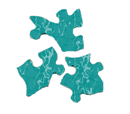Bill T.: Man Recovering From Heart Surgery
Kathryn H. Bowles, RN, PhD, FAAN
Associate Professor, School of Nursing
University of Pennsylvania, Philadelphia, Pennsylvania
Karen S. Martin, RN, MSN, FAAN
Health Care Consultant, Martin Associates
Omaha, Nebraska
Information Obtained during the First Visit/Encounter:
Bill T., a 69-year-old man, was referred to the local visiting nurse association following a four day hospitalization for an aortic valve replacement. He had a history of hypertension. Because Bill lived alone, he was discharged to his daughter's home until he became stronger and his sternal incision was stable. His discharge instructions included not to lift more than ten pounds, take his temperature daily, and call his physician if his temperature was higher than 100 F. His medications were enalapril (Vasotec) 20 mg daily, warfarin (Coumadin) 5 mg daily, docusate (Surfak) 240 mg daily, and tramadol hcl 37.5 mg/acetaminophen 325 mg (Ultracet) 1-2 tablets every 4-6 hours.
During the admission visit, Bill told the visiting nurse that he was used to living alone and being independent and active. He was concerned that he was a "burden" to his daughter and, according to his daughter, was "frustrated that he can't do much and wants this to be over". He asked several times about his expected recovery schedule. They discussed his feelings, the need for his daughter to provide care now, and activities and relaxation techniques he could use.
Bill and the nurse discussed his discharge instructions. His cardiac medications were not new; he said he was taking them correctly and seemed well informed. Bill indicated that he was eating and drinking well, was taking his stool softener because he did not want to be constipated, and did not smoke or use alcohol. His lung sounds were clear, but his recovery was complicated by continued hypertension with a blood pressure of 166/94 and a heart rate of 96. Bill knew how to take his temperature and record it; it was 99°F. He needed guidance with his pulse. His incision was tender, but healing well. Bill said he awakened frequently from discomfort at night especially when he changed position, and napped in the afternoon. Although pain inhibited his movement and deep breathing, he took his pain medication “only at night”. His pain rating was a 5 on a 0 to 10 pain scale with 10 being most severe. The nurse explained that Bill needed to take his pain medication on a regular schedule and use relaxation techniques to increase his comfort level, increase his activity, and heal. They discussed the benefits of taking sleeping pills for a few nights.
The visiting nurse called the nurse practitioner at Bill’s surgeon’s office to report his elevated blood pressure and pulse, level of pain, and previous pain management schedule. The nurse practitioner agreed with the new plan, asked the visiting nurse to monitor and report his blood pressure and pulse for several days, and ordered sleeping pills. Bill, his daughter, and the nurse discussed his medications, the plan, and their responsibilities.
Application of the Omaha System:
DOMAIN: PSYCHOSOCIAL
Problem: Role change (high priority)
Problem Classification Scheme
Modifiers: Individual and Actual
SIGNS/SYMPTOMS OF ACTUAL:
involuntary role reversal
Intervention Scheme
Category: Teaching, Guidance, and Counseling
TARGETS AND CLIENT-SPECIFIC INFORMATION:
anatomy/physiology (expected surgical recovery, needed help)
stress management (active listening, alternative activities and relaxation techniques)
Problem Rating Scale for Outcomes
Knowledge: 2-minimal knowledge (limited awareness of post-surgery course)
Behavior: 2-rarely appropriate behavior (used few techniques to manage)
Status: 3-moderate signs/symptoms (frustrated about surgical recovery, shared feelings readily)
DOMAIN: PHYSIOLOGICAL
Problem: Pain (high priority: see Role change and Medication regimen-add/modify Pain interventions at next visit if current needs are not resolved)
Problem Classification Scheme
Modifiers: Individual and Actual
SIGNS/SYMPTOMS OF ACTUAL:
expresses discomfort/pain
elevated pulse/respirations/blood pressure
Intervention Scheme
Category: Surveillance
TARGETS AND CLIENT-SPECIFIC INFORMATION:
signs/symptoms-mental/emotional (frustrations due to surgery)
signs/symptoms-physical (pain scale)
Problem Rating Scale for Outcomes
Knowledge: 2-minimal knowledge (did not relate adequate pain control to comfort, activity, healing)
Behavior: 2-rarely appropriate behavior (taking pain medication only at night)
Status: 2-severe signs/symptoms (pain scale=5; restless at night)
Problem: Circulation (high priority)
Problem Classification Scheme
Modifiers: Individual and Actual
SIGNS/SYMPTOMS OF ACTUAL:
abnormal blood pressure reading
excessively rapid heart rate
Intervention Scheme
Category: Teaching, Guidance, and Counseling
TARGETS AND CLIENT-SPECIFIC INFORMATION:
cardiac care (incision, record pulse and temperature daily, when to call provider)
signs/symptoms-physical (movement, vital signs, blood pressure, elimination patterns)
Category: Surveillance
TARGETS AND CLIENT-SPECIFIC INFORMATION:
signs/symptoms-physical (vital signs, blood pressure, lung sounds, elimination patterns)
Problem Rating Scale for Outcomes
Knowledge: 3-basic knowledge (well informed about prior condition, but not about post-surgery)
Behavior: 3-inconsistently appropriate behavior (followed prior cardiac guidelines; needed help with pulse)
Status: 2-severe signs/symptoms (high blood pressure and pulse; needed to improve pain control)
DOMAIN: HEALTH-RELATED BEHAVIORS
Problem: Sleep and rest patterns (low priority: provide interventions and rate if current needs are not resolved with Medication regimen interventions)
Problem Classification Scheme
Modifiers: Individual and Actual
SIGNS/SYMPTOMS OF ACTUAL:
frequently wakes during night
insufficient sleep/rest for age/physical condition
Problem: Medication regimen (high priority)
Problem Classification Scheme
Modifiers: Individual and Actual
SIGNS/SYMPTOMS OF ACTUAL:
inadequate medication regimen
Intervention Scheme
Category: Teaching, Guidance, and Counseling
TARGETS AND CLIENT-SPECIFIC INFORMATION:
medication action/side effects (all medications, especially for pain and sleep)
medication administration (new schedule for pain medication, sleeping pill)
mobility/transfers (movement/activity, deep breathing)
signs/symptoms-physical (pain, comfort, sleep, blood pressure, pulse
Category: Case Management
TARGETS AND CLIENT-SPECIFIC INFORMATION:
medical/dental care (gave report and requested sleeping pill)
Category: Surveillance
TARGETS AND CLIENT-SPECIFIC INFORMATION:
mobility/transfers (movement/activity, deep breathing)
signs/symptoms-physical (pain, comfort, sleep, blood pressure, pulse)
Problem Rating Scale for Outcomes
Knowledge: 2-minimal knowledge (knew details about cardiac medications, but not about pain control)
Behavior: 2-rarely appropriate behavior (took cardiac medications correctly, but not pain pills)
Status: 2-severe signs/symptoms (limited activity/mobility/sleep due to pain)
